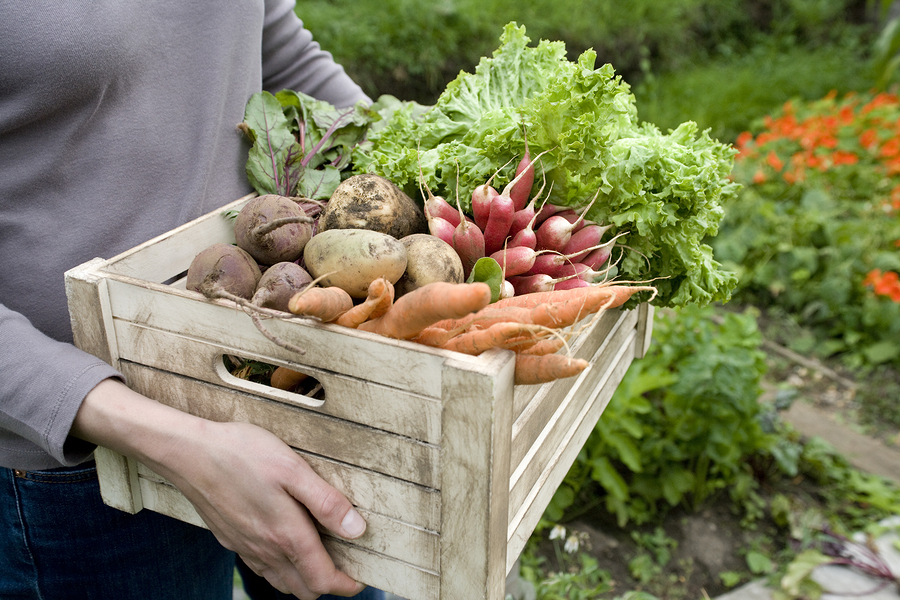What veg crops should I grow in 2021? Experts offer a beginner’s guide
Leaf through this rundown of easy veg to grow, soil requirements and pitfalls to avoid
If you began growing veg in a small way during the pandemic and feel like spreading your wings in 2021, now’s the time to be planning ahead.
Weather and soil conditions allowing, you could be creating a new veg patch, choosing the seeds you want to sow and thinking about what you want to eat in the coming year.

Pippa Greenwood
“Always try to set aside more space than you think you need. Growing your own vegetables is really rewarding, so the more you do, the more you want to do and the more space you’ll need,” says garden expert and broadcaster Pippa Greenwood, a Gardeners’ Question Time regular panellist who offers ‘Grow Your Own with Pippa Greenwood’, a veg and advice service at pippagreenwood.com.
While ‘no-dig’ gardening expert, author and YouTuber Charles Dowding (charlesdowding.co.uk), who gives talks and provides courses at home and abroad, suggests budding growers consider focussing on one or two beds, full of good compost, rather than a larger area with less fertility.
Where shall I grow my veg?

Grow veg in a sunny spot away from trees
“A spot in full sun or one which gets plenty of sun for most of the day during the summer months is ideal. Plenty of natural light and the warmth of the sunshine make it much easier to grow the widest possible range of vegetables and to have the best results,” says Greenwood.
Dowding adds: “There also needs to be a few trees or bushes nearby, otherwise your plants suffer lack of moisture in summer. Allotments are easier from this point of view, compared to many back gardens.”
What are the soil requirements?

Use a mulch of compost, Dowding advises
“Veg plants have different needs, but on the whole a soil which holds water fairly well (so is not too sandy and light) but which is also well-drained (so not too clay) is ideal,” Greenwood advises. “Incorporating plenty of well-rotted manure, garden compost or other bulky organic matter will improve most soils. Many veg can be grown in large containers if garden space is in short supply.”
Dowding supports the ‘no dig’ method, arguing the best way to create soil fertility is laying compost on top of the existing surface.
View this post on Instagram
“The most effective mulch of surface food is compost, because it’s a ‘ready meal’ for soil life, with high value per volume. Compost and organic mulches do not feed plants directly: rather, they feed soil life, whose excretions (think worm casts) are rich in food.
“The best thing you can do to improve any soil is not to dig or rotovate. This allows the natural biology to continue working uninterruptedly. Nutrients are not soluble in water, so you can apply compost at any time of year, including now.”
What shall I grow?
“The most important thing is to grow what you want to eat, not what someone says you should grow,” Greenwood advises.
View this post on Instagram
“I’d suggest growing some vegetables from young plants and raising some from seed. You might include courgettes, butternut squash, pumpkins, lettuce and salad leaves, sweetcorn, runner and climbing French beans, tomatoes (remember that some varieties need the protection of a greenhouse), potatoes, onions (easiest if you buy young plants or sets – miniature onions) and garlic.
“Peppers and chilli peppers are fun too, but you do need a really warm spot or better still, a greenhouse or porch, and these are a crop I’d recommend growing from plants. Crops like carrots, spinach and rocket are definitely best raised from seed as I find they often don’t transplant well.”
View this post on Instagram
“Salad leaves give the highest yield per area and are among the fastest vegetables between sowing and first harvests. Potatoes grow easily and crop quickly, especially first and second earlies. On the same day as you pull potatoes, plant leeks and beetroot,” suggests Dowding.
“Vegetables you can grow close together include salad leaves of any kind, onions and spring onions, spinach and carrots, also herbs such as coriander and basil. Multi-sowing is another way to maximise space – grow seedlings in clumps, to maturity.”
How do I avoid pitfalls?
View this post on Instagram
“Think about quantities – you only need enough veg to eat yourself/for your family, some to give to friends and in some cases, some to freeze. You don’t want a whole row of say, courgettes, or else you’ll end up wasting so many,” says Greenwood. “Don’t plant veg out too early unless you know they are really hardy. Most summer veg are best planted outside in May, but watch the weather! It is easy to be tempted into buying veg plants you’ll see for sale in March and April, don’t succumb.”
Dowding suggests: “Stay clear of weeds through clever mulching with any combination of cardboard and compost, and pull those few weeds, little and often.
View this post on Instagram
“Sow at the most appropriate time for each vegetable. Sowing through summer ensures your beds stay full, and this makes a huge difference to how much food you can crop through the year.”
What about pests?
View this post on Instagram
“Be aware of potential pests, such as foxes in urban areas to rabbits in rural ones, and pigeons in many areas. Buy some mesh cover to keep insects out and birds off,” says Dowding. “Look for a small greenhouse or polytunnel you might be able to install in the garden. They are sometimes available cheaply secondhand and will make a big difference to what plants you can raise and even more exotic ones you can grow successfully, such as tomatoes.”
The Press Association
Latest posts by The Press Association (see all)
- 5 new books to read this week - November 23, 2024
- 3 easy Mary Berry recipes to make this season - November 22, 2024
- In Pictures: Party stalwart kept New Labour in touch with traditional supporters - November 21, 2024
- 6 easy indoor exercises to try this winter – and why they are good for you - November 19, 2024
- Martin Clunes: I can’t afford to retire – I’ve got too many horses - November 19, 2024





















